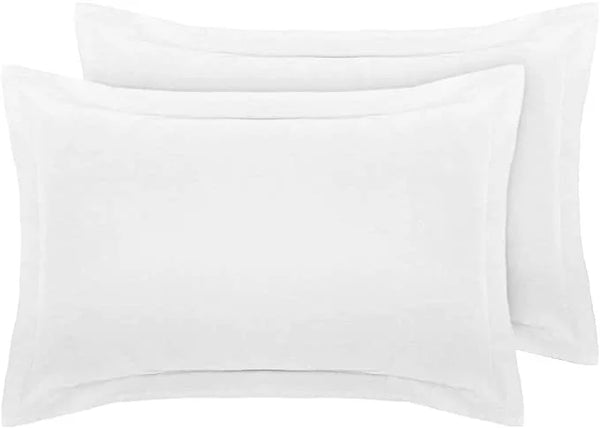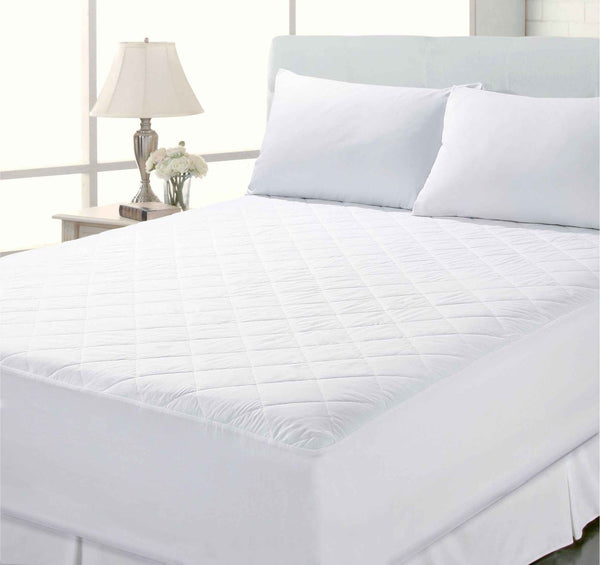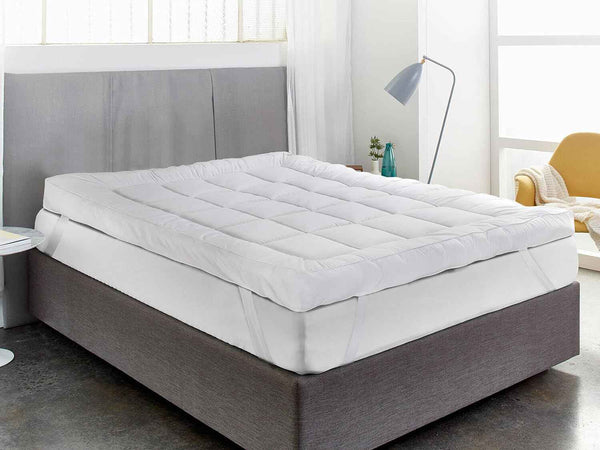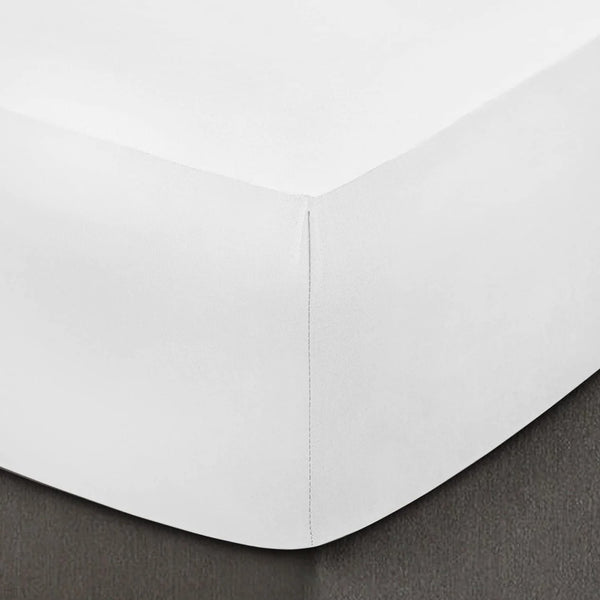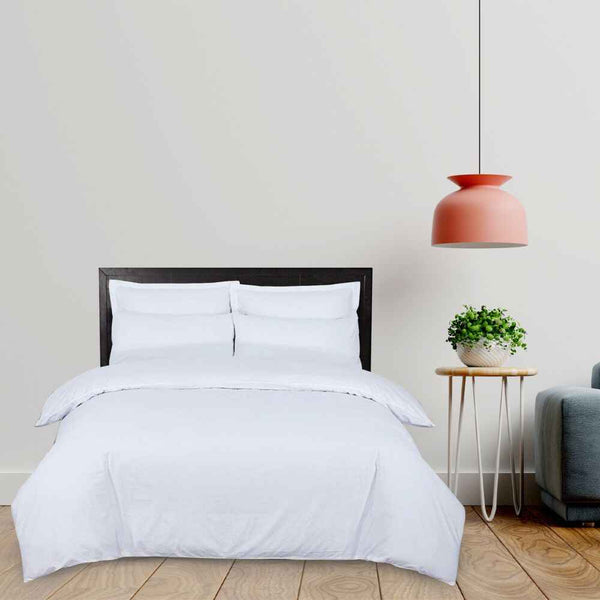It's a question that worries many households, especially during a lice outbreak: Can head lice live in bed linen? Understanding how lice behave, survive and spread is crucial in protecting your home. In this comprehensive guide, created by Dtex Homes – a trusted name in premium bedding in the UK – we explore the facts about head lice, nits and their relationship with your bedding.
What Are Head Lice and Nits?
Overview of Head Lice (Pediculus Capitis)
Head lice are tiny, wingless parasitic insects that feed on human blood, typically found on the scalp. The medical term for an infestation is pediculosis capitis. While lice do not fly or jump, they crawl quickly and can easily spread through direct head-to-head contact.
Types of Lice – Head, Body and Pubic Lice
- Head Lice – Found on the scalp, behind the ears and nape of the neck.
- Body Lice – Live on clothing and move to skin to feed.
- Pubic Lice – Infest coarse body hair such as in the pubic region.
Appearance and Identification of Head Lice
Adult lice are about the size of a sesame seed and range in color from white to greyish-brown. Nymphs are smaller and harder to see. Nits (lice eggs) are oval-shaped and white or yellow, sticking firmly to hair shafts near the scalp.
What Are Nits and How Are They Different from Lice?

Nits vs Eggs – Know the Difference
Nits are often mistaken for dandruff, but they are actually the eggs laid by lice. While dandruff can be brushed off, nits remain tightly attached to hair. Nits are a key sign of infestation and are usually found within 6mm of the scalp.
Can Nits Hatch Off the Scalp?
Nits require the warmth of the scalp to hatch. Away from the host, their chances of hatching drop drastically. Research indicates that nits rarely hatch off a host, making it unlikely they will hatch in your bedding. However, it's still important to practice good hygiene to prevent reinfestation.
Head Lice Life Cycle Explained

From Nit to Adult – 3-Stage Lifecycle
The life cycle of head lice includes:
- Egg/Nit – Hatch within 7–10 days close to the scalp.
- Nymph – A baby louse that matures in about 9–12 days.
- Adult Louse – Lives around 30 days, laying up to 10 eggs a day.
How Long Do Lice and Nits Survive Without a Host?
Adult lice typically die within 24–48 hours without a human host. Nits may survive for a few more days but are unlikely to hatch. This emphasizes the importance of regular lice care and early treatment.
Can Head Lice Live in Bed Linen?

Truth About Lice on Bedding and Fabric
Can Lice or Nits Survive in Bed Linen?
Unlike bed bugs, head lice cannot live long in bed linen. They depend on human blood and body warmth. However, if lice fall into bedding after scratching or while sleeping, they can survive for a short time. This is why washing bedding is advised during treatment.
How Long Can Lice Live on Bedding Without a Host?
According to clinical research, head lice can survive on fabric for up to 48 hours. However, they cannot reproduce or thrive without human contact. Nits are less likely to hatch away from the scalp due to lack of warmth and humidity.
Factors That Influence Survival on Bedding
Temperature, Humidity and Fabric Type
Lice and nits survive longer in warm and humid conditions. Cotton or fleece bedding may retain body heat, offering slightly longer survival. However, these insects will still die off within a day or two, especially in dry or well-ventilated environments.
Temperature, Humidity and Fabric Type
Lice and nits survive longer in warm and humid conditions. Cotton or fleece bedding may retain body heat, offering slightly longer survival. However, these insects will still die off within a day or two, especially in dry or well-ventilated environments.
How Long Can Head Lice Live Off the Hair in a UK Climate?
In the UK, average home temperatures and seasonal variations don’t support prolonged lice survival off the scalp. This makes it less likely for lice to spread through bedding unless reinfestation happens directly through shared hair accessories or clothing.
Helpful Tip:
Using hot water (above 60°C) and tumble drying bedding for 30 minutes is an effective method to kill any lice or eggs left on the fabric.Explore Quality Lice-Resistant Bedding in the UK
At Dtex Homes, we offer anti-allergenic, washable bed linens and pillow protectors ideal for households concerned about hygiene and lice. Our bedding is crafted for comfort and protection – browse our UK collection today.
Can Head Lice Live on Pillows or Sheets?

Common Misconceptions vs Real Facts
There is a widespread belief that head lice infestations often come from bedding, especially pillows and sheets. While it is possible for lice to transfer from the scalp to fabric, it is far less common than many assume. Head lice do not jump or fly; they crawl and survive by feeding on human blood. Their main habitat is the scalp, not linen or upholstery.
Do Lice Hide in Pillow Seams?
It is unlikely. Lice do not seek hiding places in bedding materials. Unlike bed bugs, lice do not nest in fabrics. However, they can accidentally fall onto pillow seams and remain there temporarily — but they cannot survive long without a host. As per the CDC, lice typically die within 24 to 48 hours if they are not on a human scalp.
Do You Need to Throw Away Bedding?
No, you do not need to discard bedding. Washing items in hot water (at least 130°F / 54°C) and drying them on high heat will effectively kill lice and nits. For non-washable items, sealing them in a plastic bag for 48 hours is usually sufficient.
Survival Rate on Fabric Surfaces
Lice vs Nits: Which Can Stay on Pillows Longer?
Lice may live for up to 48 hours on a pillow, but they quickly weaken without a human host. Nits, or lice eggs, require the warmth of the scalp to hatch and typically do not survive or hatch on cold surfaces like pillows.
Time Duration They Remain Contagious
Lice become contagious immediately after falling onto a surface but become less viable over time. On a fabric surface like a pillow, lice are considered non-contagious after 1–2 days. This is why regular laundering of bedding during treatment is important.
Signs You May Have Lice in Your Bedding

Physical and Visual Clues
Itchy Scalp, Red Bumps or Lice on Pillow?
Waking up with a noticeably itchy scalp, red sores, or spotting small insects on your pillow could be signs of a lice infestation. However, remember that these signs indicate lice presence on the scalp, not necessarily on the bedding itself.
Lice Bites and Droppings in Bed?
Lice feed frequently, but they do not typically leave bites or fecal droppings on bed linen. Unlike other pests, lice do not leave visible waste or blood spots on sheets, so this is a rare occurrence. If found, the infestation may be significant and professional advice should be sought.
Evidence Left Behind on Bedding
Finding Nits or Eggs on Bed Linen
Finding nits or lice eggs on bed linen is uncommon because they are glued tightly to hair shafts. However, after heavy scratching or combing, some may fall off onto pillowcases or sheets. In such cases, wash all bedding with hot water and tumble dry at high heat.
How Do Head Lice Spread to Bedding?

Transfer from Hair to Fabric
Lice Movement from Head to Pillow
Lice transfer to bedding when an infested person lies down. The insects may crawl onto the pillow but lack the ability to travel far or find another host easily. That’s why direct head-to-head contact remains the most common transmission route.
Do Head Lice Jump from Head to Linen?
No, head lice cannot jump or fly. This is a major misunderstanding. They rely solely on crawling, which limits their movement from a person's head to nearby surfaces like linen or clothing.
Contagion Through Shared Household Items
Combs, Towels, Toys and Clothes
Lice can spread through shared personal items such as combs, hats, scarves, towels, soft toys, and headphones. To reduce transmission risks, avoid sharing these during an active infestation and disinfect them regularly.
Can Pets Carry Lice to Bedding?
No, pets like cats and dogs do not carry human head lice. Lice are species-specific parasites. According to the NHS, animals cannot spread head lice to or from humans. Keeping your pet is safe even during a lice outbreak.
How to Get Rid of Lice on Bed Linen and Pillows

Lice Control Methods for Fabric
Washing Temperatures That Kill Lice
To effectively eliminate lice from bed linens and pillows, wash all infested items in hot water at a minimum temperature of 60°C (140°F). This temperature is proven to kill both lice and their eggs. Use a strong detergent for added effectiveness.
Do Tumble Dryers Eliminate Nits?
Yes, tumble drying on a high heat setting for at least 30 minutes is crucial. The heat from dryers is highly effective in destroying remaining nits and lice that may survive the wash. Make sure your items are dryer-safe.
Best Practices for Bedding Disinfection
Recommended Fabric Sprays and Wash Cycles
Use fabric-safe insecticidal sprays specifically designed for lice, such as Hedrin Protect & Go Spray or Full Marks Fabric Spray. Choose long wash cycles with high-speed spins to ensure all eggs are dislodged.
Should You Use Pesticide or Bug Spray on Bedding?
Avoid using harsh pesticides or general bug sprays on bedding as they are not meant for direct contact with skin or fabrics. Opt for lice-specific fabric treatments available in pharmacies across the UK.
How to Prevent Lice from Spreading to Bed Linen

Preventative Measures at Home
Regular Washing Routines
Maintain a weekly routine of washing bed linen, pillowcases, and blankets at high temperatures. In households with school-going children, increase frequency during known lice outbreaks.
Use of Washable Pillow Protectors
Invest in washable pillow protectors and mattress encasements. These act as a barrier between lice and the bedding and can be easily removed and sanitized during outbreaks.
How to Reduce Household Transmission
Cleaning Upholstery, Carpets and Curtains
Vacuum upholstered furniture, carpets, and curtains regularly. Though head lice can't survive long off the scalp, cleaning these surfaces reduces the chance of re-infestation from recently shed lice.
Preventing Re-infestation from Clothing or Hats
Avoid sharing hats, scarves, combs, or bedding. Wash worn clothing and headgear in hot water. Keep personal items separated to prevent lice transfer between family members.
Proper Head Lice and Nits Treatment in the UK

Effective Treatments for Adults and Children
Chemical vs Natural Options
UK pharmacies offer both chemical lice treatments like permethrin and natural alternatives such as tea tree oil-based products. While chemical options may kill lice faster, natural remedies are often preferred for children due to skin sensitivity.
What Works Best: Hedrin, Full Marks, or Lyclear?
Products like Hedrin, Full Marks Solution, and Lyclear Treatment Spray are widely available in UK markets and show proven results. Always follow package instructions carefully. You can consult your GP or refer to this NHS treatment guide for expert advice.
Combing Techniques and Tools
How to Use a Nit Comb Properly
Use a fine-toothed metal nit comb on wet, conditioned hair. Start from the scalp and comb down to the hair tips in small sections. Wipe the comb after each stroke to remove lice or nits.
Wet Combing Method Step-by-Step
- Apply conditioner to wet hair.
- Separate the hair into sections.
- Comb each section from root to tip using a nit comb.
- Wipe the comb on tissue after each stroke.
- Repeat every 3-4 days for 2 weeks.
How to Check for Head Lice and Nits

Signs of Infestation in Hair and Bedding
What to Look for on the Scalp and Hairline
Common signs include an itchy scalp, visible lice near the nape of the neck, or tiny white nits attached to hair strands close to the scalp. Nits are often confused with dandruff but cannot be easily brushed off.
Symptoms That May Appear on Bedding
You might notice tiny black specks, which could be lice droppings, or shed exoskeletons on pillowcases. If itching persists despite treatment, re-check the bedding.
Self-Inspection and Diagnosis
Using Detection Combs at Home
Perform a weekly self-check using a detection comb. This is especially important if you or your child have been in close contact with others, such as in school or camps. If unsure, consult a pharmacist or doctor.
Myths and Facts About Lice in Bedding

Head Lice Hacks: What Works and What Doesn't
Does Hair Dye or Chlorine Kill Lice?
While some believe that hair dye or chlorine can eliminate lice, there's no scientific evidence proving this works reliably. NHS UK confirms that only approved treatments like dimethicone lotions or malathion-based solutions are effective.
Can You Suffocate Lice with Oils or Gels?
Some natural remedies like olive oil or petroleum jelly are used to suffocate lice, but results vary. These may slow them down but don’t eliminate the infestation. For reliable results, it's best to use a recommended lice treatment product.
Common False Beliefs
Do Nits Jump or Fly from Bed Linen?
Nits (lice eggs) do not jump or fly. They are firmly attached to hair shafts and require body heat to hatch. Lice cannot fly; they crawl. So, the idea of lice jumping from sheets is a myth.
Can Lice Live in Beds Forever?
No. Head lice can only live 1–2 days without a human host. They cannot breed or survive long-term in fabric environments like mattresses or sheets. Regular cleaning keeps the risk extremely low.
When to Seek Professional Help for Lice Removal
When Home Remedies Aren’t Enough
Persistent Infestation Signs
If you’ve completed a full treatment cycle but still find lice or nits after two weeks, it may be time to consult a healthcare professional. Persistent lice may require a prescription-strength solution.
Scalp Infections from Scratching
Excessive scratching may lead to skin irritation, open wounds, or bacterial infections. If the scalp is red, swollen, or shows pus, seek medical attention immediately to prevent further complications.
FAQs
General Lice & Nits Questions
How long do head lice live off the head?
Head lice can only survive 24–48 hours off the human scalp. They need blood and warmth to survive. This is why treating the hair is more important than cleaning the environment.
Can lice survive on furniture or carpets?
Lice may temporarily fall onto furniture or carpets, but they cannot thrive there. Vacuuming and avoiding head-to-surface contact are usually enough to prevent reinfestation.
Lice and Bed Linen Questions
How often should I wash my sheets after lice?
Wash all bedding, pillowcases, and clothes used in the past 48 hours in hot water (at least 60°C). Do this at the start of treatment and again after the second treatment if needed.
Can lice return after cleaning bedding once?
If the hair isn't fully treated, lice can reappear and spread again to bed linen. Always treat the source first—the scalp—and follow up with environmental cleaning.
Why Choose Dtex Homes Bedding Products to Protect Against Lice
The Dtex Homes UK Difference
Hypoallergenic, Washable & Anti-Mite Duvet Covers
At Dtex Homes, our duvet covers are made with hypoallergenic materials, ideal for sensitive skin and lice-prone households. They're easy to wash at high temperatures, ensuring effective lice removal.
Why Our Deep Fitted Sheets Are Lice-Resistant
Our deep fitted sheets fit snugly and are crafted with anti-bacterial and anti-mite finishes, making it harder for lice to hide or survive on bedding. Perfect for families looking for an added layer of protection.
Recommended Bedding Essentials
Waterproof Mattress Protectors
Waterproof mattress protectors from Dtex Homes prevent lice, spills, and allergens from seeping into your mattress. Easy to wash and quick to dry.
Pillow Covers with Anti-Lice Fabric
Our pillow protectors feature tightly woven fabric that resists infestation and makes cleaning easy. Combine them with our fitted sheets and duvet covers for a complete lice-control bedding setup.
Final Thoughts: Stay Vigilant and Informed
Recap: Can Head Lice Live in Bed Linen?
Short-Term Survival, Not Long-Term Habitation
Head lice can survive only briefly on bedding—usually less than two days. They do not live or breed in sheets, pillows, or mattresses.
Act Quickly, Treat Properly, and Protect Bedding
The key is prompt treatment of the scalp, coupled with hot washing of bedding. Adding protective bedding products like those from Dtex Homes provides long-term peace of mind.


